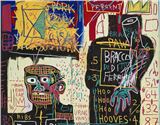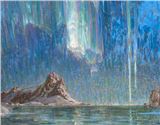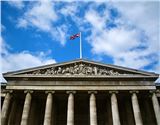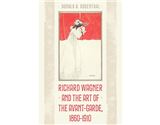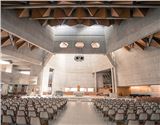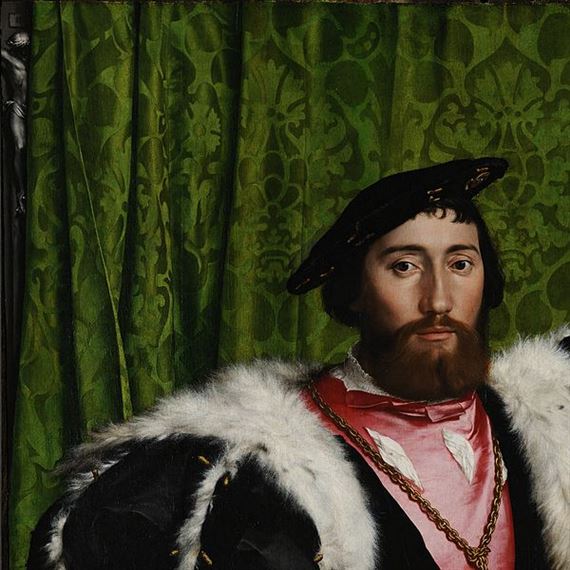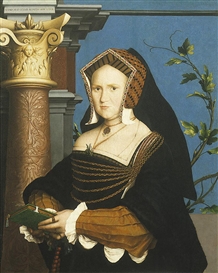Decoding the Symbolism in Holbein's 'The Ambassadors'
Your guide to one of the most richly symbolic works ever painted
Adam Heardman / MutualArt
Dec 04, 2018
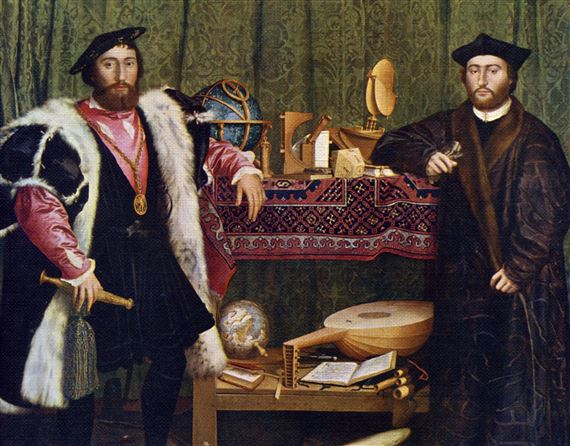
A long-time favorite of visitors to the National Gallery in London, Hans Holbein’s large double-portrait, known as The Ambassadors, is laden with significant objects and hidden symbols. Here’s our brief guide to some of the rich layers of Holbein’s most famous piece.
Hans Holbein the Younger, Double Portrait of Jean de Dinteville and Georges de Selve, known as The Ambassadors (1533)
The Ambassadors
When the painting was acquired by the National Gallery in 1890, the identity of the two strident figures remained a mystery. It wasn’t until ten years later, with the publication of Mary F. S. Hervey’s book, Holbein's "Ambassadors": The Picture and the Men (1900), that they were identified as Jean de Dinteville (left) and Georges de Selve (right). De Dinteville was a French ambassador to the court of Henry VIII, and de Selve was Bishop of Lavaur (though not fully consecrated until after the painting of this portrait, hence the absence of episcopal dress).
The two men were close friends and young men of distinction. There’s an air of fraternal pride in their expressions. De Dinteville’s letters from the period attest to his joy at the visit of his friend. Tiny details inscribed on the scabbard of de Dinteville’s dagger and on de Selve’s book tell us that both men are in their twenties.
Detail showing Georges de Selve and the 'torquetum' instrument.
The purpose of de Selve’s visit almost certainly had important significance to the schisms of the church at the time, with Lutheran reform sweeping Europe and Henry VIII’s desire to break away from the Pope. Holbein’s exacting attention to detail, though, means that the gravity of the occasion is shot through with a subtle, touching commentary on the affection shared by the two young men.
De Dintevile appears the more brash and confident, his foot stepping boldly into the very center of the circle design on the carpet. De Selve, more modestly dressed and physically reserved, shows the poise of a Bishop, though he is the younger of the two.
Et in Arcadia
The smeared-looking form in the bottom center foreground is perhaps the most well-known example of anamorphosis in art history. Holbein used a grid system to graphically project the image of a skull so that it appears entirely distorted from a frontal perspective, but becomes perfectly proportional when viewed at an oblique angle from the right. It’s an ingenious riff on the memento mori trope, reminding viewers of death amidst life. It rhymes with the more subtle badge in the shape of a skull which is pinned to de Dinteville’s hat.
Detail showing the anamorphic skull as seen from the extreme right, decoding the illusion.
Moving further up to the very top-left corner of the frame, we see one more image of death. Peeking from behind the luscious green curtain is a view of Christ on the cross. The painting largely celebrates the importance of the two men and their political affairs, whilst also subtly celebrating their close friendship. The two memento mori and the crucifixion, however, serve as a reminder of the transience of human life.
Detail showing Jean de Dinteville, the memento mori on his cap, and the partially obscured crucifixion scene.
During his time in Basel, Switzerland, Holbein moved in the circle of Desiderius Erasmus, a famous late-Renaissance scholar and humanist. Erasmus moved from Rotterdam to Basel in 1521, and Holbein painted his portrait many times. One example, in fact, hangs adjacent to The Ambassadors at the National Gallery. Though humanism at the time did not necessarily have the non-religious connotations it does today, it still rejected doctrinal approaches to religion, distancing itself from both Lutheran reforms and the power of the Papacy.
Holbein’s Christ, partially obscured by the decorous curtain, could be a gently satirical comment upon the dogmatic back-and-forth in Europe at the turn of the 15th-century. De Selve was in England to talk to Henry VIII about divisions in the Church. Holbein the humanist could be suggesting that the courtly pomp of such affairs in fact obscures true faith.
The Objects
The painting is full of significant objects, each picked out in incredible detail. The import of each one is the subject of debate. Hervey’s book was long considered the authority, despite her own admissions that she didn’t have the expertise to definitively comment on the instruments. A more recent paper, published in 1999 by Elly Dekker and Kristen Lippincott, develops Hervey’s identifications in great depth.
Detail showing the polyhedral sundial.
Two globes are visible, one terrestrial and one celestial. The terrestrial globe (a standard globe of the Earth) sits upside-down beneath the table, turned so that a topsy-turvy Europe is presented to the viewer. This could, again, symbolize the tumult of the Lutheran Reformation which shook the continent during the early 1500s. Standing proudly upon the table is the celestial globe, showing the movements of the stars. Its position emphasizes the strength and constancy of the heavenly spheres in comparison to earthly affairs.
Detail showing the terrestrial globe and the lute.
Looking closely at the globe of the earth, we can see that the town of Polisy, France is marked on the map. Inventories show that the painting hung in a chateau in Polisy at some point in its history, and it’s possible that de Dinteville took it back to France with him in 1533.
Other scientific instruments such as the quadrant, Shepherd’s dial, and the polyhedral sundial represent man’s various attempts to make sense of his universe. The lute seemingly suggests that art and music are as valuable as science in this respect.
Detail showing the 'torquetum', an instrument for taking simultaneous horizon, equitorial, and elliptic co-ordinates.
It’s been suggested that the dates and times which can be read from these instruments are significant, though Dekker and Lippincott note various technical reasons why this might not be the case.
The gnomon of Holbein’s Shepherd’s dial suggests a date of either April 10th or August 15th, and the shadow on the sundial is painted to give a time of either 9.00am or 3.00pm. The celestial globe displays 2.40pm on July 12th, and the reading on the ‘torquetum’ might refer to the time during which Halley’s Comet appeared in 1531.
It’s impossible to know if these readings are either accurate or significant, but such details add to the tension between measurement and mystery that makes the painting so compelling. Holbein’s Ambassadors is such a richly symbolic painting that whole books are scarcely enough to cover it. It warrants repeated viewing, and there are probably details yet to be discovered. Hopefully, this brief decoding has you ready to go back and view Holbein’s enigmatic masterpiece again and again!
For more on auctions, exhibitions, and current trends, visit our Articles Page

